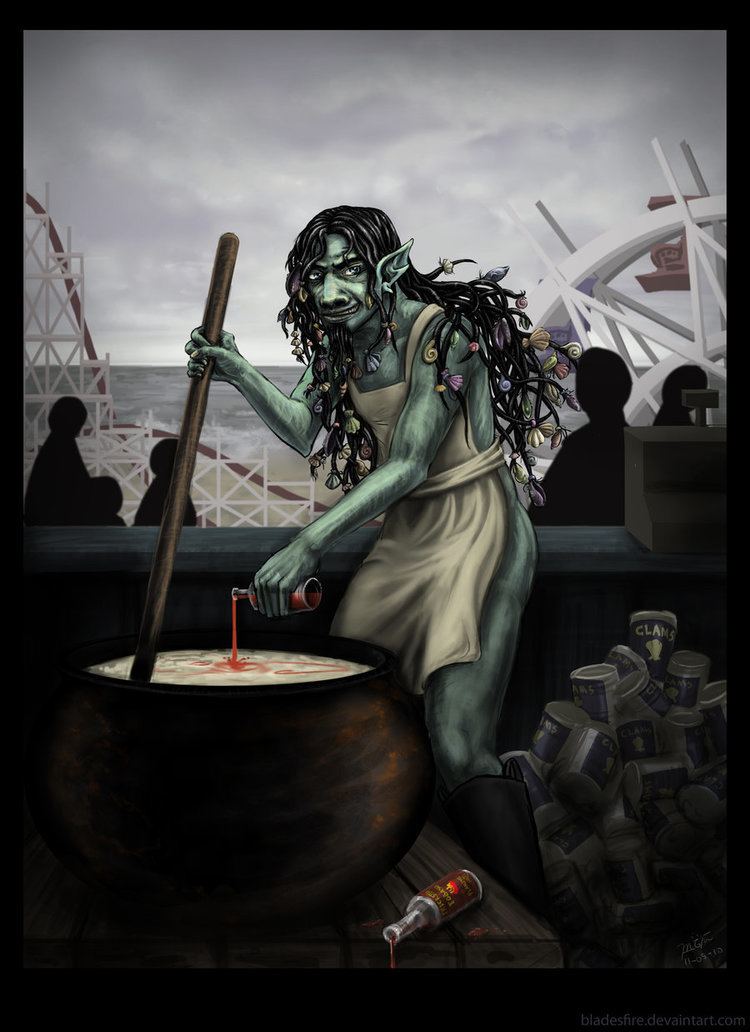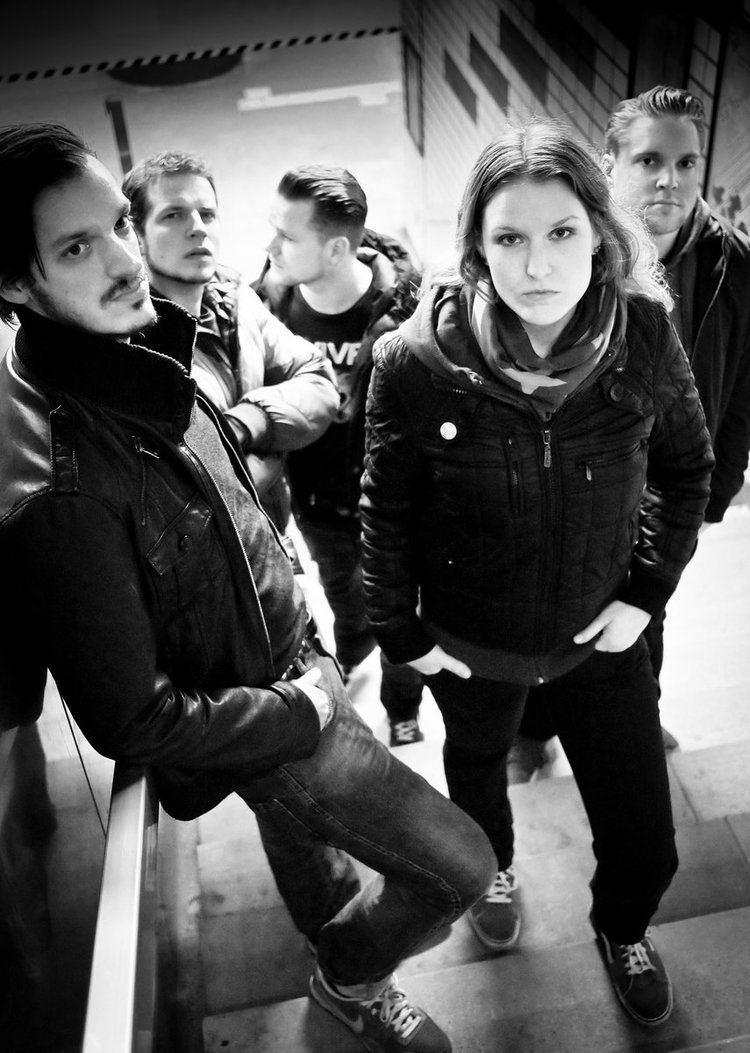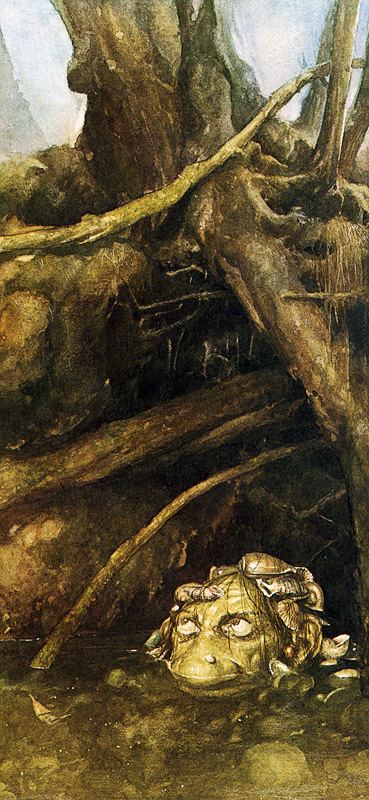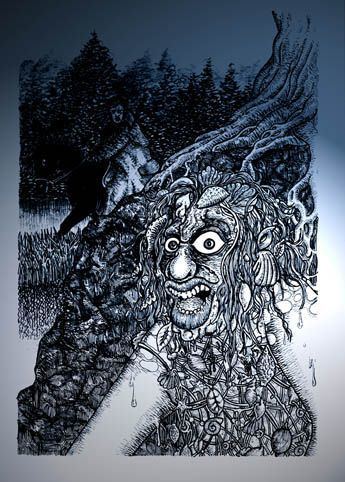 | ||
Shellycoat yours is to drive
The Scottish and Northern English folklore, a shellycoat is a type of bogeyman that haunts rivers and streams.
Contents
- Shellycoat yours is to drive
- Shellycoat cold sailor grave
- Name
- Distribution
- Characteristics
- Schellenrock
- References
Shellycoat cold sailor grave
Name
The name goes from the coat of shells these creatures are said to wear, which rattle upon movement.
Distribution

Many places on the coast of Scotland have names that reference the shellycoat. Supposedly, shellycoats are particularly fond of the area around the River Hermitage.
Characteristics

Shellycoats are considered to be relatively harmless; they may mislead wanderers, particularly those they think are trespassing upon the creature's territory, but without malice. A common tactic of a shellycoat would be to cry out as if drowning and then laugh at the distracted victim.
As described above, the shellycoat shares many of the traits of the Brag, Kelpie and Nix.
Schellenrock

Jacob Grimm stated in his Deutsche Mythologie that the Scottish goblin Shellycoat is one and the same as the German Schellenrock, that is bell-coat:

A pück [home-sprite] served the monks of a Mecklenburg monastery for thirty years, in kitchen, stall and elsewhere; he was thoroughly good-natured, and only bargained for 'tunicam de diversis coloribus, et tintinnabulis plenam.' [a "parti-coloured coat with tinkling bells"] In Scotland there lived a goblin Shellycoat, and we saw (p. 465) that the dwarfs of the Mid. Ages also loved bells [schellen; and schellenkappe is Germ. for cap and bells]. The bells on the dress of a fool still attest his affinity to the shrewd and merry goblin (fol, follet); see Suppl.
Thomas Keightly quotes Grimm and classifies the shellycoat as a type of brownie.:
Another name by which the domestic spirit was known in some parts of Scotland was Shellycoat, of which the origin is uncertain.
The domestic nature of the shellycoat emphasized by Grimm and Keightly stands in contradistinction to the wild nature of the water sprites mentioned in other sources.
